#Academy Award 1938
Text
Test Pilot (1938)
Test Pilot by #VictorFleming starring #ClarkGable, #MyrnaLoy and #SpencerTracy, "Gable and Loy are incredibly sexy together",
VICTOR FLEMING
Bil’s rating (out of 5): BBBB
USA, 1938. Metro-Goldwyn-Mayer. Story by Frank Wead, Screenplay by Vincent Lawrence, Waldemar Young. Cinematography by Ray June. Produced by Louis D. Lighton. Music by Franz Waxman. Production Design by Cedric Gibbons. Costume Design by Dolly Tree, Margaret Wood. Film Editing by Tom Held.
Clark Gable is a dashing, spirited daredevil pilot who tests new…

View On WordPress
#Academy Award 1938#Arthur Aylesworth#Cedric Gibbons#Clark Gable#Claudia Coleman#Dolly Tree#Frank Wead#Franz Waxman#Gloria Holden#Lionel Barrymore#Louis D. Lighton#Louis Jean Heydt#Margaret Wood#Marjorie Main#Metro-Goldwyn-Mayer#Myrna Loy#Priscilla Lawson#Ray June#Samuel S. Hinds#Spencer Tracy#Ted Pearson#Tom Held#Victor Fleming#Vincent Lawrence#Virginia Grey#Waldemar Young
0 notes
Text
Oscar Nominee of All Time Tournament: Round 1, Group A
(info about nominees under the poll)

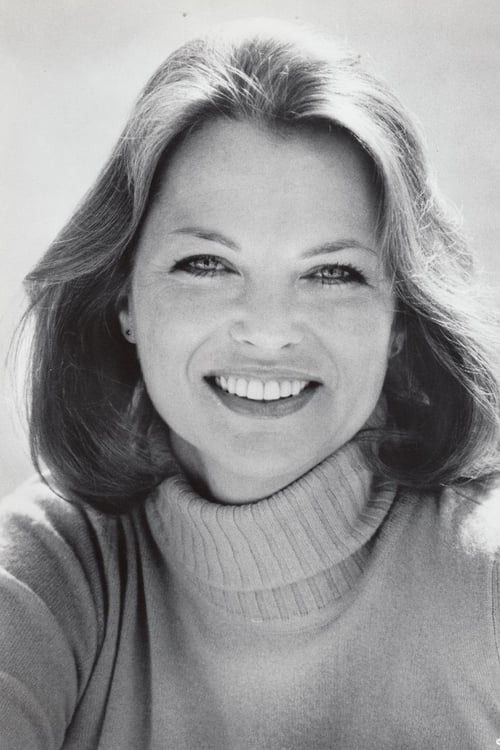
ROBERT MORLEY (1908-1992)
NOMINATIONS:
Supporting- 1938 for Marie Antoinette
--
LOUISE FLETCHER (1934-2022)
WINS:
Lead- 1976 for One Flew Over the Cuckoo's Nest
#oscars#academy awards#actors#film#oscar nominees#oscar winners#robert morley#louise fletcher#marie antoinette 1938#one flew over the cuckoo's nest#nominees group a#nominees group a polls
13 notes
·
View notes
Text

Tyrone Power and Janet Gaynor attend the Academy Awards at the Biltmore Hotel in Los Angeles.
#tyrone power#janet gaynor#tyrone and janet#1938#1930s#tyrone power 1930s#janet gaynor 1930s#academy awards#academy awards 1938#black and white#tyrone power black and white#tyrone power candid
8 notes
·
View notes
Text

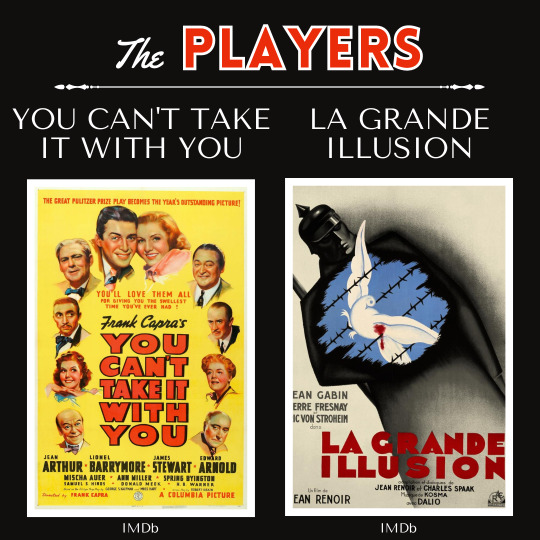


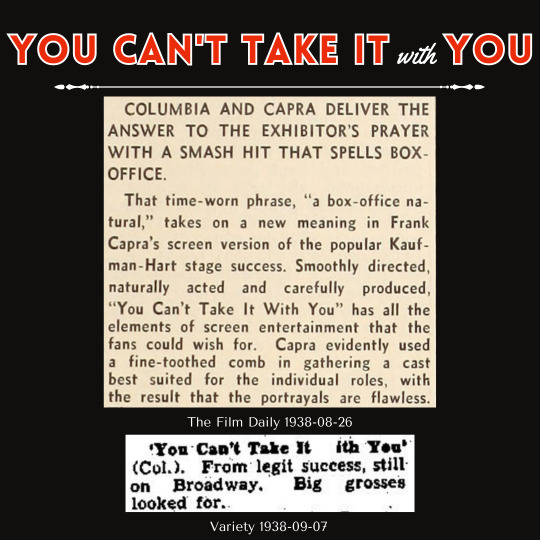

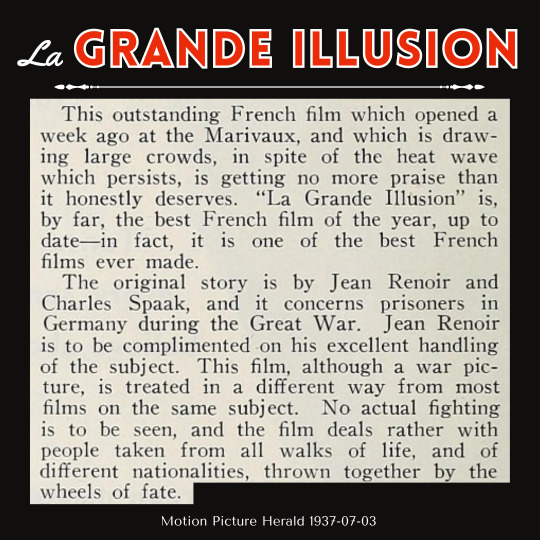
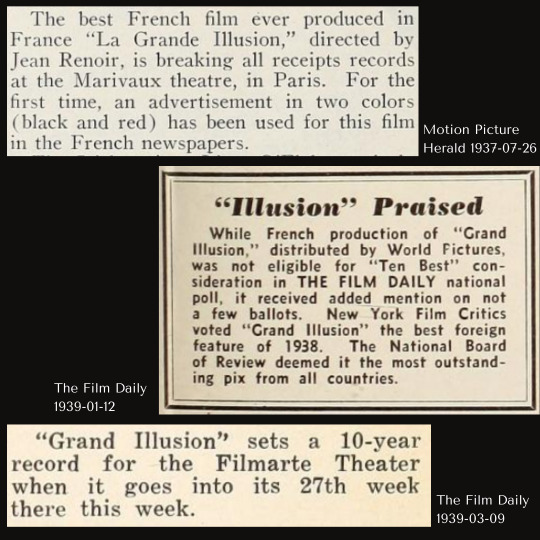

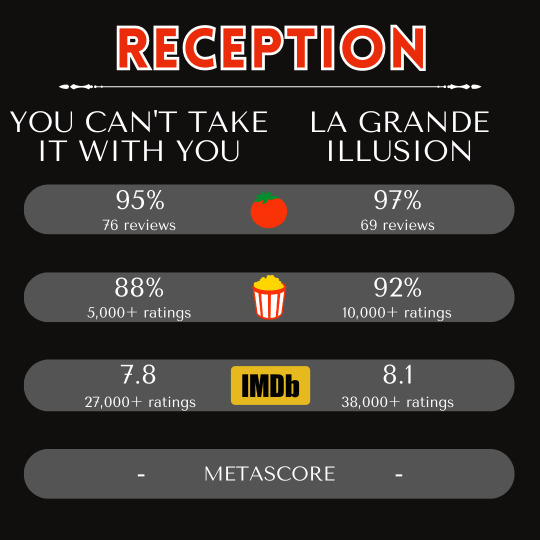


This one was definitely a contentious match-up for me. Rom-com You Can't Take It with You won over the war drama La Grande Illusion, the first foreign language film to be nominated for Best Picture.
You Can't Take It with You was based off of a 1936 play of the same name. During the film's release in 1938, the play was STILL running on Broadway. It was an instant box office success. The Radio City Music Hall had to increase to 5 screenings a day to handle the demand.
It was clearly a play adaptation, and it was wonderful. I have a soft side for screwball comedies, and this one was definitely a riot. There are also way too many characters, but not in a bad way.
La Grande Illusion is listed as a war drama, but definitely has some light-hearted comedy to it. I struggled to find a solid review from its US release, but many considered it the best French film to date.
Honestly, there was something different about La Grande Illusion. I'm not sure if I'm just getting desensitized to 1930s films, but this one felt significantly more sophisticated. And I couldn't even tell you exactly why (and it was not just the fact that it was in French). There were nuances that did not need to be described. The film style was simple but effective. It's aggressively political in nature without being overbearing. All around a great film. Great job, France.
As for the Academy Awards, we may have ditched the categories of Dance Direction and Assistant Director, but we've still got the weirdly similar Original Story and Screenplay, AND we've added a new confusing duo: Original Score and Scoring!
There were also some brief changes to the voting system prior to the 11th Academy Awards, but each source seemed to just confuse me more on that.
Current reception for both films is solid. Some argue that You Can't Take It with You is one of Frank Capra's weaker films, but still praise the comedy and the casting. Critics consider La Grande Illusion to be a successful anti-war film on par with All Quiet on the Western Front (and even more so because both were banned in Germany for some time.)
Unofficial Review: Watch both!
#oscars#academy awards#11th academy awards#you can't take it with you#you can't take it with you 1938#la grande illusion#grand illusion#la grande illusion 1937#grand illusion 1937#1930s#film#1930s film#oscarupsets
2 notes
·
View notes
Text
Cliff Edwards - When You Wish Upon a Star
1940
"When You Wish Upon a Star" is a song written by Leigh Harline and Ned Washington for the 1940 Disney animated film Pinocchio. It was sung by Cliff Edwards in the character of Jiminy Cricket, and is heard over the opening credits and in the final scene of the film. It won the 1940 Academy Award for Best Original Song, and was therefore the first Disney song to win an Oscar. "When You Wish Upon a Star" is widely considered as the signature song of The Walt Disney Company and is often used as such in the production logos at the beginning of many Disney films since the 1980s.
Harline and Washington delivered "When You Wish Upon a Star" to the Pinocchio story crew in early autumn 1938, and they recognized it right away as a spotlight song that should be given prominence in the film. Disney decided that the song should play over the opening credits, and used as a musical theme throughout the film.
The Library of Congress deemed Edwards's recording of the song "culturally, historically, or aesthetically significant" and inducted it into the National Recording Registry in 2009. The American Film Institute ranked "When You Wish Upon a Star" seventh in their 100 Greatest Songs in Film History, the highest ranked of only four Disney animated film songs to appear on the list.
In Japan, Sweden, Finland, Norway, and Denmark, the song has become a Christmas song. The song features in Disney's one-hour Christmas special From All of Us to All of You, originally broadcast in 1958 in the US, but now considered a Christmas tradition in the Nordic countries, where it is broadcast on Christmas Eve every year since 1959. 🎄⭐
"When You Wish Upon a Star" recieved a total of 65,8% yes votes!
youtube
537 notes
·
View notes
Text
*if you pick this one I have Questions. I mostly put it here bc I thought it was interesting that it’s a lost broadcast.
#pride and prejudice#jane austen#poll#fitzawkwarddarcy#wereadtoliveathousandlives#tagging you guys bc this is your jam :)
843 notes
·
View notes
Text

Spencer Tracy was born on April 5, 1900. He is considered one of the all-time great screen actors and he was the first actor to win two consecutive Academy Awards for Captains Courageous in 1938 and for Boys Town in 1939. He died in 1967 at the age of 67.
29 notes
·
View notes
Text
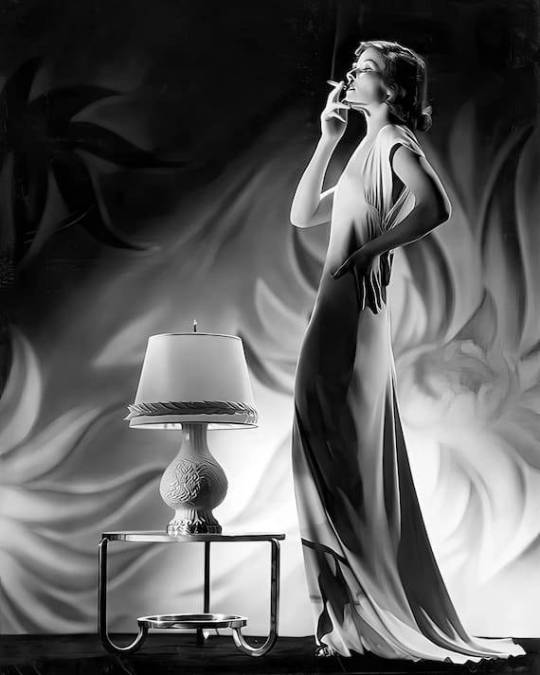
Katharine Hepburn
Katharine Houghton Hepburn (May 12, 1907 – June 29, 2003) was an American actress whose career as a Hollywood leading lady spanned six decades. She was known for her headstrong independence, spirited personality, and outspokenness, cultivating a screen persona that matched this public image, and regularly playing strong-willed, sophisticated women. She worked in a varied range of genres, from screwball comedy to literary drama, and earned her various accolades, including four Academy Awards for Best Actress—a record for any performer. In 1999, Hepburn was named the greatest female star of classic Hollywood cinema by the American Film Institute.
Raised in Connecticut by wealthy, progressive parents, Hepburn began to act while at Bryn Mawr College. Favorable reviews of her work on Broadway brought her to the attention of Hollywood. Her early years in film brought her international fame, including an Academy Award for Best Actress for her third film, Morning Glory (1933), but this was followed by a series of commercial failures culminating in the critically lauded box office failure Bringing Up Baby (1938). Hepburn masterminded her comeback, buying out her contract with RKO Radio Pictures and acquiring the film rights to The Philadelphia Story, which she sold on the condition that she be the star. That comedy film was a box office success and landed her a third Academy Award nomination. In the 1940s, she was contracted to Metro-Goldwyn-Mayer, where her career focused on an alliance with Spencer Tracy. The screen partnership spanned 26 years and produced nine films.
Hepburn challenged herself in the latter half of her life as she tackled Shakespearean stage productions and a range of literary roles. She found a niche playing mature, independent, and sometimes unmarried women such as in The African Queen (1951), a persona the public embraced. Hepburn received three more Academy Awards for her performances in Guess Who's Coming to Dinner (1967), The Lion in Winter (1968), and On Golden Pond (1981). In the 1970s, she began appearing in television films, which later became her focus. She made her final screen appearance at the age of 87. After a period of inactivity and ill health, Hepburn died in 2003 at the age of 96
43 notes
·
View notes
Text
Hermann Goring
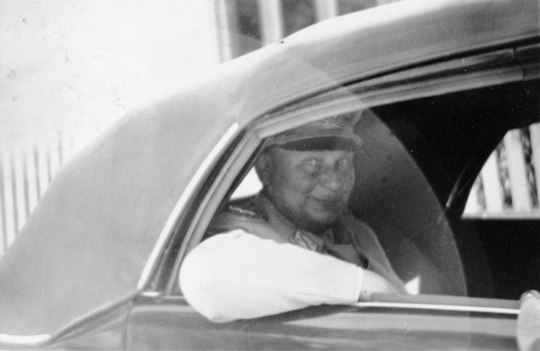
This is Hermann Goring, the Reich minister for Aviation, timeline:
1893: He was born in Rosenheim, 12 January.
1895: Albert, his younger brother, was born.
1904: He was sent to boarding school, where the food was poor and the discipline was harsh.
1909: He was sent to a military academy at Berlin Lichterfelde, from which he graduated with distinction.
1912: He joined the Prince Wilhelm Regiment (112th Infantry) of the Prussian army in 1912.
1913: His father died.
1913: He was admitted to officers' school.
1914: The First World War began.
1914: He served with his infantry regiment in the region of Mülhausen, a garrison town just a mile from the French border.
1915: He passed to the newly formed Luftstreitkräfte, the air force of the German Empire.
1915: He and his friend Loerzer were assigned as a team to FFA 25 in the Crown Prince's Fifth Army. They flew reconnaissance and bombing missions.
1915: He received the Iron Cross first class.
1918: When Manfred Von Richthofen, the legendary Red Baron, died Goring succeeded him as his successor.
1918: Highly decorated, he was also awarded the medal for valor Pour le Mérite, the highest German military decoration at the time.
1918: The First World War ended.
1920: He met his first wife, Carin von Kantzow.
1922: Göring went to Munich to study political science at university.
1922: He met Hitler and he joined the Nazi Party.
1923: He was given command of the Sturmabteilung (SA) as Oberster SA-Führer
1923: He married Carin.
1923: He take part in the failed Munich Putsch, and he was wounded in the groin.
1924: He and his wife visited Rome, passing through Florence and Siena. Göring met Mussolini.
1927: Thanks to a general amnesty, he and his wife were able to repatriate.
1928: He was elected deputy to the Reichstag.
1931: His wife died.
1931: He was sent on a mission to the Vatican, where he met Pope Pius XI.
1932: He was elected president of the Reichstag and from that position supported Hitler's bid for chancellor.
1933: He was one of the main actors in the Reichstag fire, used by the Nazis to eliminate any opposition.
1933: He was appointed Minister-President of the Free State of Prussia.
1933: He created the Gestapo.
1933: Adolf Hitler was appointed Reich Chancellor.
1933: He was appointed minister for aviation.
1933: He was appointed General der Infanterie by President von Hindenburg.
1933: He built his home called Carinhall in honor of his first wife.
1934: He granted control of the Gestapo to the SS.
1934: He was one of the main instigators of the Night of the Long Knives together with Himmler.
1934: He was appointed Reich Minister for Forestry.
1935: He married his second wife Emmy Sonnemann.
1935: He founded the Luftwaffe.
1936: He was appointed Reich Plenipotentiary for the Four-Year Plan.
1936: He also became responsible for the plan to confiscate the assets of German Jews, which was supposed to finance the rearmament of Germany.
1938: His only child, Edda, was born.
1938: With the help of Himmler's Gestapo, he plotted first against von Blomberg and then with his successor, von Fritsch, causing them both to fall
1938: He played an important role in the Anschluss, the union between the Third Reich and Austria.
1939: He created the Reich Central Office for Jewish Emigration in Berlin, with the task of promoting the departure of Jews from all German territories, and placed it under the direction of Heydrich.
1939: Hitler designates him as his successor.
1939: The Second World War began.
1940: Göring was given a renewed mandate to direct the "Four Year Plan" for the next four years, which made him responsible for the war economy.
1940: By a decree on 19 July , Hitler promoted Göring to the rank of Reichsmarschall des Grossdeutschen Reiches (Reich Marshal of the Greater German Reich), a special rank which made him senior to all other army and Luftwaffe field marshals.
1940: He gave directives for the plunder of the occupied territories, mainly France.
1941: It was Göring who gave, on Hitler's behalf, the order to prepare a "final solution to the Jewish problem" to Reinhard Heydrich.
1945: He was arrested by the Allies.
1946: He was tried at the Nuremberg trials.
1946: He committed suicide to avoid execution.
Sources:
Wikipedia: Hermann Goring
Military Wiki: Hermann Goring
❗❗I DON'T SUPPORT NAZISM, FASCISM OR ZIONISM IN ANY WAY, THIS IS AN EDUCATIONAL POST❗❗
41 notes
·
View notes
Text

Luise Rainer and Fredric March dancing on March 10, 1938, after the 10th Academy Awards ceremony. #Oscars
23 notes
·
View notes
Text
A director must be a policeman, a midwife, a psychoanalyst, a sycophant and a bastard.
Billy Wilder
Austrian-born American filmmaker, screenwriter, producer, artist and journalist Billy Wilder is regarded as one of the most brilliant and versatile filmmakers of Hollywood‘s golden age. With ‘The Apartment’, Wilder became the first person to win Academy Awards as producer, director and screenwriter for the same film.
Born Samuel Wilder in Sucha, Austria (now part of Poland) in 22 June 1906, Billy Wilder spent his early professional life as a reporter in Vienna. In 1926 he relocated to Berlin, where his reputation as a journalist grew. But by then a different dream had taken hold - the movies. Selling his first script to an extremely grateful and quite naked producer he helped hide from the jealous boyfriend of a neighboring young lady, Wilder’s career as a screenwriter began. After several successful years in the German film industry, Wilder fled to Paris a week after the Reichstag fire in 1933.
Ten months later he emigrated to America, where an initially difficult time in Hollywood gave way to employment as a screenwriter.
In 1938 Wilder was teamed with Charles Brackett. Through their scripts for such films as ‘Bluebeard’s Eight Wife’, ‘Ninotchka’, and ‘Ball of Fire’, they became the best-known and most respected writing team in Hollywood. This success enabled Wilder to fight for and win his first American directing assignment, the now-classic comedy, ‘The Major and the Minor’, and “the Billy Wilder Film” was born.
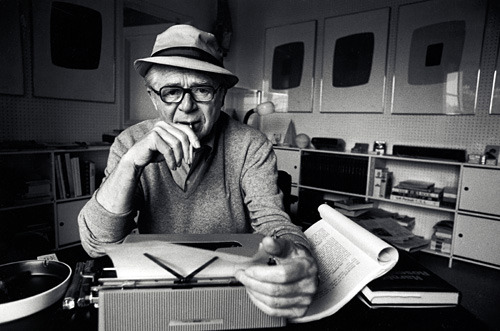
“The Billy Wilder film.” The phrase is at once as specific and difficult to casually categorise as the filmmaker himself. Billy Wilder, the master of the American comedy who wrote and directed the grand melodramas of ’Sunset Boulevard’ and ‘Double Indemnity’. The hard-hitting dramatist who created the funniest movie ever made, ’Some Like It Hot’. The “great cynic” who steeped us in the lyric romanticism of ‘Love in the Afternoon’ and ‘Avanti!’. The “classic romantic” who confronted us with the harsh realities of ‘Ace in the Hole’. Simultaneously one of the most European and American of all directors, the man refuses to stand still long enough to allow us our neat and easy definition. But, to put it in his own words, “Nobody’s perfect.”
Through his work on films as daringly varied as ‘The Lost Weekend’, ‘A Foreign Affair’, ‘The Apartment’, and ‘The Private Life of Sherlock Holmes’, this “imperfect genius” has proven himself a true master of all aspects of the language of film, as comfortable and adept t telling a story thorough his brilliant visual style as through his unparalleled dialogue. And although the characters, the locales, the tone and genres may change, one subject seems to remain constant - the bizarre and glorious state know as the human comedy. Through the drama and the farce and the romance and despair, what we’re watching up there is, as in all great art, a reflection of ourselves.

Often running into criticism for his presentation of taboo topics such as alcoholism and prostitution, the high quality of the films redeemed him in the eyes of both the public and the industry. Of the many great stars he directed, Marilyn Monroe, Marlene Dietrich, Shirley MacLaine, Jimmy Stewart and Jack Lemmon are only a few.
The late 1960s and 1970s, however, were not as kind to Wilder. His brand of cynicism, irony and satire were out of step with this generation’s view of peace, love, revolution and individual experimentation
A 7 time Oscar winner, Steven Spielberg called him "the greatest writer/director who ever lived." Here's some amazing footage from his birthday party where he was joined by a host of famous directors.
#wilder#billy wilder#quote#film director#film#film producer#oscar winner#writer#films#cinema#movies#hollywood#hollywood golden age#arts#culture#icon
58 notes
·
View notes
Text
THIS DAY IN GAY HISTORY
based on: The White Crane Institute's 'Gay Wisdom', Gay Birthdays, Gay For Today, Famous GLBT, glbt-Gay Encylopedia, Today in Gay History, Wikipedia, and more … April 9



1476 – Italy: Leonardo Da Vinci and three other young men are accused of sodomy anonymously, but subsequently acquitted.


1821 – The French poet Charles Baudelaire (d.1867), a central figure in nineteenth-century French literature, was born on in Paris (d.1867). Two collections of Baudelaire's poetry continue to intrigue and influence writers: Les fleurs du mal (Flowers Of Evil, 1857) and Le spleen de Paris (Paris Spleen, 1869). In the latter collection, published posthumously, he essentially invented the "prose poem." For a while lived the modish life of a literary dandy on an inheritance from his father, reluctantly joining the Paris boheme when his fortune ran dry.
Speculation continues about his personal life. Some early writers suggested that he died a virgin; many others now believe that he died of syphilis acquired in 1841. He had complicated relations with Jeanne Duvall, a prostitute; Madame Sabatier, a courtesan for the wealthy and socially prominent; and Marie Daubrun, an actress. The poems Duvall inspired portray her as both the apex of beauty and the nadir of evil.
Lesbianism fascinated Baudelaire. He even considered naming his first book of poems Les lesbiennes. "Lesbos," from Les fleurs du mal, celebrates lesbian love and evokes Sappho, who is described as both "mannish" and "beautiful." Further, the speaker challenges the authorities who would "dare" judge those who inhabit Lesbos. Even the gods would not dare to judge these women, he asserts.
Two other poems called "Femmes damnées" also explore lesbianism. Here the lovers, with their disordered souls, must suffer in a world wound tight with rules. The bourgeois considers such women demonic; that alone makes them fascinating to Baudelaire.
Male homosexuality does not receive this kind of direct treatment; gay men can find no equivalent "Lesbos" in his work.
He was probably homosexual himself, or at least Marcel Proust thought so, as did Andre Gide, Roger Peyrefitte, and many others. The floppy cravat that Baudelaire affected became all the rage of European dandies and homosexuals during the first decades of the 20th century, gays having adopted him as their very own at an early date.

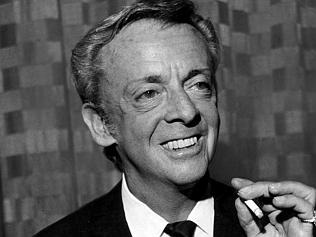
1909 – the Australian dancer, actor, director and choreographer Sir Robert Helpmann CBE was born on this date (d.1986). Born Robert Murray Helpman, he added the extra 'n' to avoid his name having 13 letters, at the suggestion of the dance diva Anna Pavlova, who was a devotee of numerology.
He was born in Mount Gambier and also boarded at Prince Alfred College in Adelaide, South Australia. The Helpmann Academy in South Australia, a partnership of the major visual and performing arts education and training institutions in South Australia offering award courses for people seeking professional careers in the arts, was named in his honor.
in 1932 he went to London. He joined the Sadler's Wells, later the Royal Ballet and was a principal dancer from 1933 to 1950. He established a great partnership with Margot Fonteyn, and together with choreographer Frederick Ashton, created many great roles, whilst also occasionally undertaking straight acting roles. Helpmann and Fonteyn toured the United States as principal dancers with the Royal Ballet in 1949 and caused a sensation, making stars of them all.
In 1938, Helpmann met a young Oxford undergraduate while fulfilling an invitation to dance at the university. Immediately drawn to the handsome and intelligent Michael Benthall, the pair formed a relationship that was to last for 36 years until the English theatre director Benthall's untimely death in 1974. The couple lived and often worked together quite openly for the time.
In 1965 Helpmann returned to Australia to become co-director of the Australian Ballet. Since he was Gay and flamboyant, his arrival in what was at that time a very conservative country caused some consternation. Australians were proud of his international fame, but not sure what to make of him personally. His most significant contribution to the development of theatre in Australia was his time with the Australian Ballet. The avant-garde nature and sexual overtones of much of his work unsettled many Australians. He did not endear himself with the comment:
"I don't despair about the cultural scene in Australia because there isn't one here to despair about."
Helpmann's obituaries in the Australian media were suitably laudatory, but also reserved. The country paid him the highest final recognition it could by honouring him with a state funeral in Sydney, the eulogy calling him "a genius, an outstanding communicator of unique inspiration and insight. He asserted his rights to pursue a path that improved the quality of life of the nation, and defeated the common herd of detractors." An obituary in The Times in London, characterised his appearance as "strange, haunting and rather frightening", and portrayed him as "a homosexual of the proselytizing kind" whose impact upon a company was "dangerous as well as stimulating", creating fresh headlines in Australia.


1929 – The Utah Supreme Court, although upholding the constitutionality of the 1925 sterilization law, rules that a prisoner caught in the act of consensual sodomy with another prisoner, and who is described as "acting lovingly toward other boys in the prison," can not be sterilized for that reason alone.


1948 – Bernard-Marie Koltès was a French playwright and director (d.1989).
Born to a middle-class family in Metz, his life was violent and anchored in revolt. He took off from home at 20 for a nomadic writing life that began with a stay in New York in 1968. For a social rebel seeking an uninhibited gay experience, the timing was perfect. He returned to New York frequently until his death in 1989. He he had tried his hand at writing as a youth but renounced it, and didn't take to the stage until the age of twenty. He first garnered recognition for his work on a production of Medea (Médée) in 1970.
After seeing the film actress Maria Casarès, he was inspired and resumed writing, completing around ten plays in his lifetime. His first piece, the long monologue, The Night Just Before The Forests, was staged in 1977 at the Avignon Festival, and subsequent productions were put on in collaboration with director Patrice Chéreau.
Koltès's work, based in real-life problems, expresses the tragedy of being alone and of death. Koltes is most famous for The Night Just Before the Forests (La Nuit juste avant les Forêts, 1976), r (1977) and In the Solitude of Cotton Fields (Dans la Solitude des Champs de Coton, 1986). Many of these plays were first directed by Patrice Chereau when he was artistic director of the Théâtre des Amandiers in Nanterre. Koltes also translated into French Shakespeare's The Winter's Tale.
Genet and the absurdists influenced Koltès's writing. Like other absurdist writers, he felt exiled - in his case, as a homosexual in a heterosexual world. In Africa, he saw native cultures being wiped out by European influences. This theme brought forth Black Battles with Dogs. After a visit to America he wrote Quay West (1985), about a brother and sister in a foreign culture. The title and the opening dialogue of that play, about tempting, dangerous life in moldy warehouses on a river, recall the West Street piers of the meatpacking district, and their vast, collapsing sheds that for two decades were sex resorts for venturesome gay men.
The psychopathic killer Roberto Succo provided the inspiration for his final play Roberto Zucco. It was first performed posthumously in Berlin in 1990, directed by Peter Stein. It has since been performed across Europe and the United States.
Although he did not attempt to deny it, Kolteès only ever referred fleetingly to his homosexuality, downplaying this as a motivating factor or theme behind his writing. He was rarely forthcoming about his private life, and what he did say is often contradictory or misleading.
Koltès died in 1989 due to complications from AIDS.


1963 – Marc Jacobs is an American fashion designer. He is the head designer for Marc Jacobs, as well as Marc by Marc Jacobs, a diffusion line, with more than 200 retail stores in 80 countries. He has been the creative director of the French design house Louis Vuitton since 1997. Jacobs is on Time Magazine's "2010 Time 100" list of the 100 most influential people in the world, and ranked 12th on Out Magazine's 2011 list of "50 Most Powerful Gay Men and Women in America".
Jacobs, who is openly gay was in a four-year relationship with salesman and retired escort Jason Preston. However, in February 2008, it was reported that Jacobs was engaging in an affair with escort and porn star Erik Rhodes who died in 2012.. Later he was in a relationship with advertising executive Lorenzo Martone. In March 2009, Women's Wear Daily reported that the pair was engaged after a year of dating. Several reports that they got married were later denied. On July 24, 2010, Martone announced via Twitter that he and Jacobs had not been together for two months.
In April 2018, Jacobs proposed to his new boyfriend, Charly Defrancesco, via a flashmob while in a Chipotle restaurant. The flashmob did a routine to the song "Kiss" by Prince. They were married in a lavish wedding held in New York City in April 2019.
Jacobs and Defrancesco purchased a home in Rye, New York in April 2019. The Westchester home was designed by Frank Lloyd Wright and is known as the Max Hoffman House.


1999 – Montero Lamar Hill, known by his stage name Lil Nas X, is an American rapper, singer, and songwriter. He rose to prominence with the release of his country rap single "Old Town Road", which first achieved viral popularity in early 2019 before climbing music charts internationally and becoming diamond certified by November of that same year, moving over ten million certified units in streaming and sales combined.
"Old Town Road" spent 19 weeks atop the U.S. Billboard Hot 100 chart, becoming the longest-running number-one song since the chart debuted in 1958. Several remixes of the song were released, the most popular of which featured country singer Billy Ray Cyrus. As "Old Town Road" was atop the Hot 100, Lil Nas X came out as gay, becoming the only artist to do so while having a number-one record.
Montero Lamar Hill was born in Lithia Springs, Georgia. He was named after the Mitsubishi Montero. His parents divorced when he was six, and he settled in the Bankhead Courts housing project with his mother and grandmother. Three years later, he moved in with his father, a gospel singer, north of the city in Austell. Although initially reluctant to leave, he later regarded it as an important decision, "There's so much shit going on in Atlanta—if I would have stayed there, I would have fallen in with the wrong crowd." He started "using the Internet heavily right around the time when memes started to become their own form of entertainment"; about when he was 13.
He spent much of his teenage years alone, and turned to the Internet, "particularly Twitter, creating memes that showed his disarming wit and pop-culture savvy." His teenage years also saw him struggling with his coming out to himself as being gay; he prayed that it was just a phase, but around 16 or 17 he came to accept it. He began playing trumpet in the fourth grade and was first chair by his junior high years, but quit out of fear of looking uncool.
In early June 2019, Lil Nas X came out to his sister and father and he felt "the universe was signalling him to do so", despite his uncertainty whether his fans would stick by him or not. On June 30, 2019, the last day of Pride Month, Lil Nas X came out publicly as gay, tweeting: "some of y'all already know, some of y'all don't care, some of y'all not gone [fuck with me] no more. but before this month ends i want y'all to listen closely to c7osure. 🌈🤩✨" The tweet confirmed earlier suspicions when he first indicated this in his track "c7osure". Rolling Stone noted the song "touches on themes such as coming clean, growing up and embracing one's self". The next day he tweeted again, this time highlighting the rainbow-colored building on the cover art of his EP 7, with the caption reading "deadass thought i made it obvious". He was unambiguous in an interview several days later on BBC Breakfast, where he stated that he was gay and understands that his sexuality is not readily accepted in the country or rap music communities.
The response to the news was mostly positive, but also garnered a large amount of homophobic backlash on social media, to which Lil Nas X also reacted. The backlash also came from the hip hop community, drawing attention to homophobia in hip hop culture. In January 2020, rapper Pastor Troy made homophobic comments on the outfit Lil Nas X wore during the Grammy Awards, to which Lil Nas X responded: "Damn I look good in that pic on god."
In January 2023, Lil Nas X tweeted a new statement about his sexual orientation, writing "be [for real] would y’all be mad at me if i thought i was a little bisexual". The next day, he tweeted "that was my last time coming out the closet i promise".


12 notes
·
View notes
Text
Oscar Nominee of All Time Tournament: Round 1, Group A
(info about nominees under the poll)
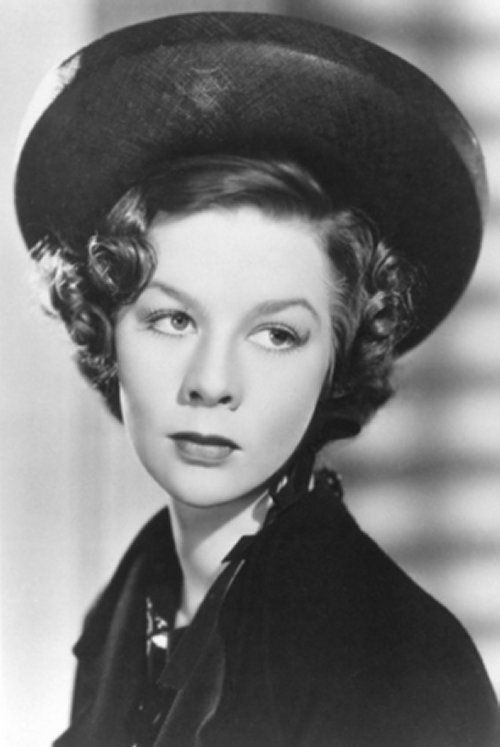

WENDY HILLER (1912-2003)
NOMINATIONS:
Lead- 1938 for Pygmalion
Supporting- 1966 for A Man for All Seasons
WINS:
Supporting- 1958 for Separate Tables
--
BERENICE BEJO (1976-)
NOMINATIONS:
Supporting- 2011 for The Artist
#oscars#academy awards#oscar nominees#oscar winners#actors#film#wendy hiller#berenice bejo#pygmalion#pygmalion 1938#a man for all seasons#a man for all seasons 1966#separate tables#separate tables 1958#the artist#the artist 2011#nominees group a#nominees group a polls
8 notes
·
View notes
Text

Cartier, Necklace of Twenty-nine mine cut emeralds, diamonds, and platinum, 1938 (Private Collection)


Merle Oberon in vintage publicity photos wearing the Cartier emerald necklace
Cartier's exquisite emerald and diamond necklace was one of the centerpieces of Merle Oberon's jewelry collection, and one she retained until her death. She originally saw the necklace in the window of Cartier Paris in 1939. When she went in to inquire about the necklace, she was told that fashion designer Elsa Schiaparelli had the necklace on hold. The next day, it was gone from the shop window. After Merle told her husband, film producer Alexander Korda, about this, he immediately went over to Cartier to ask about the necklace. It had not been sold to Schiaparelli, but merely moved to secure storage. He bought the necklace on the spot for his wife.
She wore the necklace on-screen in the 1963 film Of Love and Desire.

Merle Oberon wearing the necklace at the 1973 Academy Awards while presenting a special achievement Oscar.

At its last auction sale, the necklace achieved over $2.7M in open bidding.
16 notes
·
View notes
Text





Hello Dollies!
The original Dolly on Broadway, Carol Channing (1964)
The movie Dolly, Barbra Streisand (1969)
The first Broadway revival, Pearl Bailey (1975)
The 21st Century Broadway revival, Bette Midler (2017)
The one who followed Bette, Bernadette Peters (2018)
Hello, Dolly! a 1964 musical with lyrics and music by Jerry Herman and a book by Michael Stewart, is based on Thornton Wilder's 1938 farce The Merchant of Yonkers, which Wilder revised and retitled The Matchmaker in 1955. The musical follows the story of Dolly Gallagher Levi, a strong-willed matchmaker, as she travels to Yonkers, New York, to find a match for the miserly "well-known unmarried half-a-millionaire" Horace Vandergelder.
The original Broadway production won 10 Tony Awards, including Best Musical and Best Actress in a Musical for Carol Channing. The awards earned set a record which the play held for 37 years.
The show has become one of the most enduring musical theater hits, with four Broadway revivals and international success. It was also made into the 1969 film Hello Dolly! by 20th Century Fox, starring Barbra Streisand, winning three Academy Awards, including Best Score of a Musical Picture and was nominated in four other categories, including Best Picture at the 42nd Academy Awards.
14 notes
·
View notes
Text
Happy 100th birthday to Glynis Johns, the oldest living Academy Award nominee. Born in South Africa, where her showbiz parents were touring, she started dancing at five and had appeared in several plays before making her screen debut in the Yorkshire drama South Riding (1938) at 14. Another 90 credits would follow, although at one point she enrolled at a secretarial school when the roles dried up.
She teamed three times with Robert Donat and twice with James Stewart, as her husky voice, expressive eyes and assured sense of style came to embody postwar British womanhood opposite stars like Dirk Bogarde, Alec Guinness, David Niven and Sean Connery.
Mostly seen in dramas and comedies, Johns had a quirky approach to picking projects that saw her feature in two horror anthologies, guest as Lady Penelope Peasoup in three episodes of the 1960s TV series Batman, and play a nun in Nukie (1987), the much-derided E.T. knock-off that made headlines at the start of 2023 when the last video copy sold on eBay for $80,600.
Oh, and she also won a Tony for A Little Night Music (1973), for which Stephen Sondheim wrote ‘Send in the Clowns’ specially for her. Many happy returns!
31 notes
·
View notes